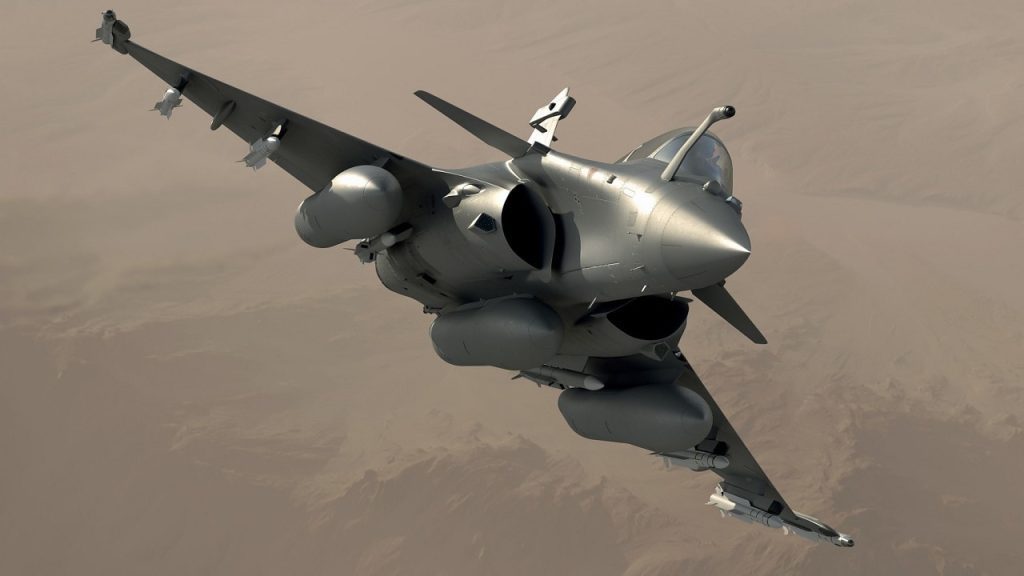Summary and Key Points: The Dassault Rafale fighter aircraft, which previously faced challenges in export sales, has experienced a remarkable upswing lately, with orders from countries such as Greece, Indonesia, and the UAE. The production rate, once limited to slightly over one aircraft per month, has now increased to two and aims to double further to three to five per month.
– Despite Dassault’s capability to rapidly scale up production, challenges persist due to shortages of skilled labor and constraints within the supply chain.
– Recently, French President Macron revealed infrastructure initiatives to support the expansion of Rafale squadrons, bolstering France’s nuclear deterrence strategy. The rising global interest in the Rafale may lead Dassault to establish an additional overseas production line, underscoring the fighter’s growing significance and attractiveness on the global stage.
Why Dassault’s Rafale Fighter Suddenly Became a Global Bestseller
The years 2009-2011 marked a highly competitive period in the international fighter aircraft export market, particularly with Brazil and India embarking on extensive fighter procurement programs. These initiatives not only involved direct purchases from manufacturers but also the establishment of local production facilities in the customers’ nations.
In 2014, Brazil opted for the Saab JAS-39E Gripen aircraft, currently produced at Embraer’s factory in Gavião Peixoto. Meanwhile, India, due to its historical ties with Dassault and a desire to move away from Russian military supplies, selected the Rafale in 2013, later purchasing 36 units directly from Bordeaux in 2015.
Current Developments in India’s Rafale Procurement
While India has yet to establish a local assembly line for the Rafale, there remains interest from Dassault to supply more aircraft and eventually create local production capacity. Recently, the Indian Navy announced plans to acquire 26 Rafale aircraft for its carrier operations, consisting of 22 single-seat Rafale M fighters and 4 two-seat Rafale B aircraft for training.
The procurement of these Rafale M jets is intended as a temporary measure until the delivery of the domestically developed Twin Engine Deck-Based Fighter (TEDBF).
Challenges in Dassault Rafale Production Rates
Despite its design capabilities, the Rafale struggled to gain traction in the export market, resulting in a stagnated production rate over the years, particularly before India’s 2015 order. A prior senior officer of the French Air Force noted that production rates were at a low of 1.3 aircraft per month, reflecting the subdued demand for the fighter.
Today, however, the situation has transformed, with countries including Greece, Croatia, and the UAE actively pursuing acquisitions, leading to a renewed influx of orders for the Rafale, a trend likened to a “long soaking rain after a long drought,” according to one French aerospace expert.
Revival of Dassault Rafale Fighter Production
In a recent press conference, Dassault CEO Eric Trappier announced that production has increased to two aircraft per month, with expectations to quickly ramp up to three. While the company has the infrastructure to expand production, it is facing challenges in hiring skilled workers due to competition with other industries. Despite this, Dassault remains committed to managing these hurdles and maintaining timely output.
Furthermore, supply chain issues present ongoing challenges, as some suppliers are engaged in multiple industries and face financing difficulties that hinder production capacity. Dassault is addressing these issues by providing support, including sending engineers to assist suppliers at their facilities.
Future Outlook for Dassault Rafale Production
French President Macron recently announced plans for two infrastructure projects aimed at supporting additional Rafale squadrons, reflecting broader military modernization efforts. This includes an investment to enhance Luxeuil-Saint-Sauveur aerodrome to accommodate new Rafale F5 aircraft, reinforcing France’s nuclear capabilities.
With the continued strong demand for Rafale aircraft, it is anticipated that increased production capacity may become necessary. Although Dassault remains reticent about specific future plans, there is speculation about the establishment of a second production line internationally.
About the Author: Reuben F. Johnson
Reuben F. Johnson is an expert on foreign military affairs based in Warsaw, with experience advising on defense technology and weapon systems design. He has worked with several NATO governments and has reported from various countries over the past three decades.



